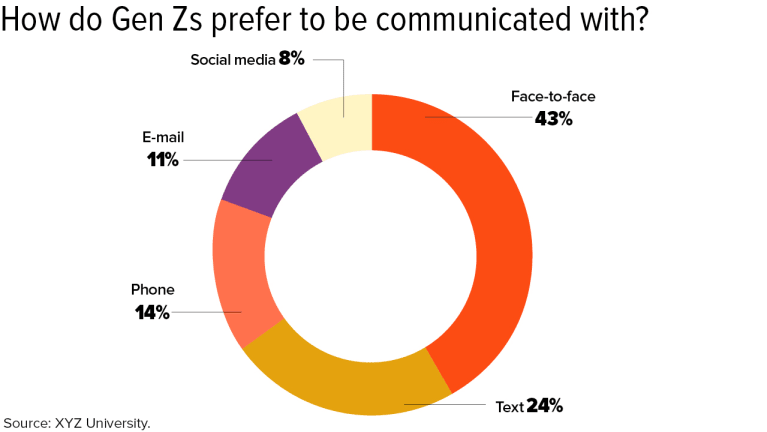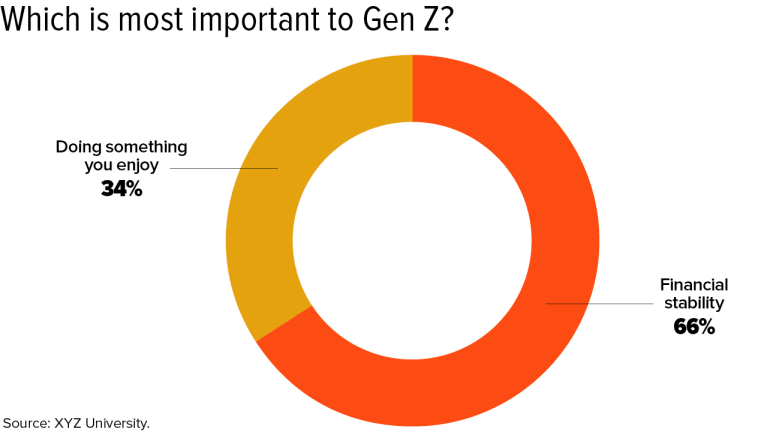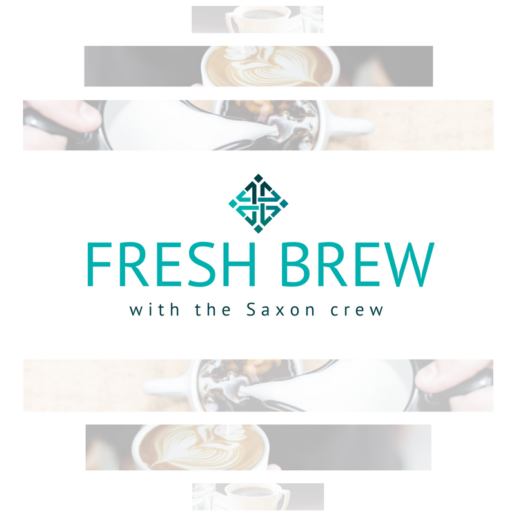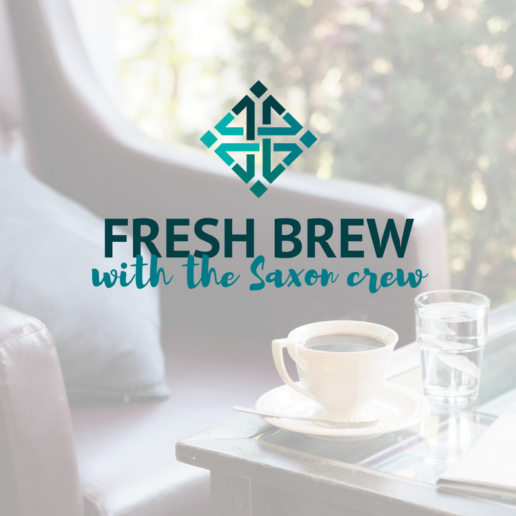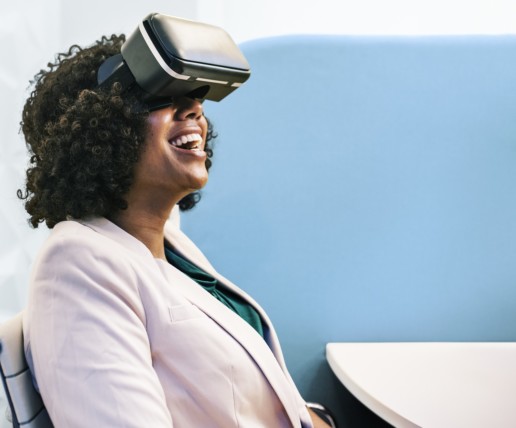A 16-Year-Old Explains 10 Things You Need to Know About Generation Z
What was life like when you were a teenager? The world has been focused on understanding and adapting to Millennials. Now Generation Z is beginning to graduate and enter the workforce. Read this blog post for 10 things the world should know about Gen Z.
Think about what life was like when you were 16. The clothes you wore, the places you shopped. What was most important to you then?
Whenever I speak to an organization eager to learn about Generation Z, I always ask that question. I get responses that include everything from the fleeting fashion trends of the day (bell-bottom jeans, anyone?) to the time-honored tradition of getting a driver’s license.
What I hope to achieve as a 16-year-old in 2018 is probably not all that different from what anyone else wanted when they were my age. It’s the way people go about reaching their goals that evolves over time—and that’s what also forms the basis of most generational clashes.
For the past several years, the world has been focused on understanding and adapting to Millennials, the largest and most-educated generation in history. Born between 1981 and the mid-1990s, this group has inspired important dialogues about generational differences and challenged all industries to evolve to meet their needs. In the workplace, Millennials have helped drive a greater focus on flexibility and collaboration and a rethinking of traditional hierarchies.
Of course, any analysis of generations relies on generalities that can’t possibly describe every person or situation. It’s important to remember that generations exist on a continuum—and that there is a large degree of individual variation within them. The point of this type of research is to identify macro trends among age groups that can help foster workplace harmony. Essentially, it’s a way of attempting to understand people better by getting a sense of their formative life experiences. The generation to which one belongs is among the many factors, such as race, religion and socioeconomic background, that can shape how a person sees the world.
But there’s little doubt that gaps among the U.S. generations have widened dramatically. For example, an 8-year-old boy in the United States who grew up with a tablet will likely have more in common with an 8-year-old in China who used a similar mobile device than he will with his 70-year-old U.S. grandparents.
In thinking about the generations, a key thing to understand is that these groups are typically categorized by events rather than arbitrary dates. Generation Z’s birth years are generally recognized as 1996 to 2009. The start year was chosen so that the cohort would include only those who do not remember the Sept. 11 terrorist attacks. The belief is that if you were born in 1996 or later, you simply cannot process what the world was like before those attacks. For Generation Z, the War on Terror has always been the norm.
Like all other generations, mine has been shaped by the circumstances we were born into, such as terrorism, school shootings and the Great Recession. These dark events have had profound effects on the behavioral traits of the members of Generation Z, but they have also inspired us to change the world.
Earlier this year, XYZ University, a generations research and management consulting firm where I act as the director of Gen Z studies, surveyed more than 1,800 members of Generation Z globally and released a study titled “Ready or Not, Here Comes Z.” The results were fascinating.
We discovered key characteristics about Generation Z and what the arrival of my generation will mean for the future of work. At 57 million strong and representing the most diverse generation in U.S. history, we are just starting to graduate from college and will account for 36 percent of the workforce by 2020.
Needless to say, Generation Z matters. And it is more important than ever for HR professionals to become familiar with the following 10 characteristics so that they know how to engage with my generation.
1. Gen Z Always Knows the Score
Members of this generation will put everything on the line to win. We grew up with sports woven into the fabric of our lives and culture. To us, the NFL truly does own a day of the week. But it’s more than just professional, college or even high school teams that have shaped us; it’s the youth sports that we played or watched throughout our childhoods. This is the generation of elite young teams and the stereotypical baseball mom or dad yelling at the umpire from the bleachers.
Our competitive nature applies to almost everything, from robotics to debates that test mental fortitude. We carry the mindset that we are not necessarily at school just to learn but to get good grades that will secure our place in the best colleges. Generation Z has been thrown into perhaps the most competitive educational environment in history. Right or wrong, we sometimes view someone else’s success as our own failure or their failure as our success.
We are also accustomed to getting immediate feedback. A great example is the online grading portals where we can get frequent updates on our academic performance. In the past, students sometimes had to wait weeks or longer to receive a test grade. Now, we get frustrated if we can’t access our scores within hours of finishing an exam—and sometimes our parents do, too.
2. Gen Z Adopted Gen X’s Skepticism and Individuality
Generations are shaped by the behavioral characteristics of their parents, which is why clumping Millennials and Generation Z together is a mistake. In fact, when it comes to each generation’s behavioral traits, Millennials are most similar to their parents—the Baby Boomers. Both are large, idealistic cohorts with influences that will shape consumer and workplace behavior for decades.
Members of Generation Z, on the other hand, are more akin to their parents from Generation X—a smaller group with a skeptical, individualistic focus—than they are to Millennials. That’s why many generational traits are cyclical. Just because Millennials and members of Generation Z are closer in age does not necessarily mean they share the same belief systems.
3. Gen Z Is Financially Focused
Over the past 15 to 20 years, HR professionals have been hyper-focused on employee engagement and figuring out what makes their workers tick. What drives someone to want to get up in the morning and come to work for your organization?
As it turns out, workplace engagement matters less to Generation Z than it did to previous generations. What’s most important to us is compensation and benefits. We are realists and pragmatists who view work primarily as a way to make a living rather than as the main source of meaning and purpose in our lives.
Obviously, we’d prefer to operate in an enjoyable environment, but financial stability takes precedence. XYZ University discovered that 2 in 3 Generation Zers would rather have a job that offers financial stability than one that they enjoy. That’s the opposite of Millennials, who generally prioritize finding a job that is more fulfilling over one that simply pays the bills.
That financial focus likely stems in part from witnessing the struggles our parents faced. According to a study by the Pew Charitable Trust, “Retirement Security Across Generations: Are Americans Prepared for Their Golden Years?,” members of Generation X lost 45 percent of their wealth during the Great Recession of 2008.
“Gen X is the first generation that’s unlikely to exceed the wealth of the group that came before it,” says Erin Currier, former project manager of Pew’s Economic Mobility Project in Washington, D.C. “They have lower financial net worth than previous groups had at this same age, and they lost nearly half of their wealth in the recession.”
Before Generation Z was decreed the ‘official’ name for my generation, there were a few other candidates, including the ‘Selfie Generation’ and ‘iGen.’
Employers will also need to recognize that members of Generation Z crave structure, goals, challenges and a way to measure their progress. After all, the perceived road to success has been mapped out for us our entire lives.
At the same time, it’s important to be aware of the potential for burnout among young overachievers—and to incorporate fun and breaks into the work environment and provide access to healthy escapes focused on relaxation and stress relief.
4. Gen Z Is Entrepreneurial
Even though they witnessed their parents grapple with financial challenges and felt the impact of the worst economic meltdown since the Great Depression, members of Generation Z believe there is a lot of money to be made in today’s economy. Shows like “Shark Tank” have inspired us to look favorably on entrepreneurship, and we’ve also seen how technology can be leveraged to create exciting—and lucrative—business opportunities with relatively low overhead. Fifty-eight percent of the members of my generation want to own a business one day and 14 percent of us already do, according to XYZ University.
Organizations that emphasize Generation Z’s desire for entrepreneurship and allow us space to contribute ideas will see higher engagement because we’ll feel a sense of personal ownership. We are motivated to win and determined to make it happen.
5. Gen Z Is Connected
Before Generation Z was decreed the “official” name for my generation, there were a few other candidates, including the “Selfie Generation” and “iGen.”
I find those proposed names both condescending and misleading. While it’s often assumed that Generation Z is focused solely on technology, talking face to face is our preferred method of communication. Sure, social media is important and has undoubtedly affected who we are as a generation, but when we’re communicating about something that matters to us, we seek authenticity and honesty, which are best achieved in person.
“Gen Z has the power of technology in their hands, which allows them to communicate faster, more often and with many colleagues at one time; but it also brings a danger when it’s used as a crutch for messages that are better delivered face to face,” says Jill Katz, CHRO at New York City-based Assemble HR. “As humans in the workplace, they will continue to seek empathy, interest and care, which are always best received face to face.”
XYZ University’s research found that cellphones and other electronic devices are primarily used for the purpose of entertainment and are tapped for communication only when the face-to-face option isn’t available.
However, successfully engaging with Generation Z requires striking a balance between conversing directly and engaging online. Both are important, and we need to feel connected in both ways to be fully satisfied.
6. Gen Z Craves Human Interaction
Given that members of Generation Z gravitate toward in-person interactions, HR leaders should re-evaluate how to best put the “human” aspect back into business. For example, hiring processes should emphasize in-person interviews more than online applications.
A great way to engage us is to hold weekly team meetings that gather everyone together to recap their achievements. Although members of Generation Z don’t necessarily need a pat on the back, it’s human nature to want to feel appreciated. This small gesture will give us something to look forward to and keep us feeling optimistic about our work. In addition, we tend to work best up against a deadline—for example, needing to have a project done by the team meeting—due to our experience facing time-sensitive projects at school.
7. Gen Z Prefers to Work Independently
Millennials generally prefer collaborative work environments, which has posed a challenge to conventional workplace cultures and structures. In fact, many workplaces have eliminated offices and lowered cubicle walls to promote more interaction. Yet recent studies indicate that totally open offices may actually discourage people from working together. The noise and lack of privacy could prompt more people to work at home or tune others out with headphones. Since different types of work require varying levels of collaboration, focus and quiet reflection, ideal workplaces incorporate room for both togetherness and alone time.
It’s important to be aware of the potential for burnout among young overachievers—and to incorporate fun and breaks into the work environment and provide access to healthy escapes focused on relaxation and stress relief.
The emphasis on privacy will likely only intensify under Generation Z. Unlike Millennials, we have been raised to have individualistic and competitive natures. For that reason—along with growing research into optimal office design—we may see the trend shift away from collaborative workplaces toward more individualistic and competitive environments.
8. Gen Z Is So Diverse That We Don’t Even Recognize Diversity
Generation Z marks the last generation in U.S. history where a majority of the population is white. Given the shifting demographics of the country, we don’t focus as much on someone’s color, religion or sexual orientation as some of our older counterparts might. To us, a diverse population is simply the norm. What we care about most in other people is honesty, sincerity and—perhaps most important—competence.
Indeed, we have been shaped by a society that celebrates diversity and openness. A black man occupied the White House for most of our lives, and we view gay marriage as a common and accepted aspect of society.
9. Gen Z Embraces Change
Compared to teenagers of other generations, Generation Z ranks as the most informed. We worry about our future and are much less concerned about typical teen problems, such as dating or cliques, than we are about becoming successful in the world.
The chaos and unrest in our political system have inspired us to want to get involved and make a difference. Regardless of which side of the aisle we are on, most of us are informed and passionate about the issues facing our society today. Witness, for example, the students of Marjory Stoneman Douglas High School in Parkland, Fla., who organized a political movement around gun control in the wake of a mass shooting at their school.
Social media allows us to have a voice in our political system even before we can vote. This opportunity has forced us to develop critical-thinking and reasoning skills as we engage in sophisticated debates about important issues that might not even affect us yet.
“Gen Z has a strong ability to adapt to change,” says Paul Carney, an author and speaker on HR trends and a former HR manager with the Navy Federal Credit Union. “For those of us who have spanned many decades in the workplace, we have seen the rate of change increase and it makes most of us uncomfortable. Gen Z are the people who will help all of us adapt better.”
According to numerous polls, the political views of Generation Z trend fiscally conservative (stemming from our need for financial stability) and socially liberal (fueled by diverse demographics and society).
10. Gen Z Wants a Voice
Given how socially aware and concerned its members are, Generation Z seeks jobs that provide opportunities to contribute, create, lead and learn.
“One of the best ways I have seen leaders engage with Gen Z is to ask them how they would build a product or service or design a process,” Carney says. “Gen Z has some amazing abilities to bring together information, process it and take action. When we do allow them to share ideas, great things happen.”
We’re also an exceptionally creative bunch. Managers will need to give members of this generation the time and freedom to come up with innovative ideas and accept that, despite our young age, we have valuable insights and skills to offer—just like the generations that came before us and those that will follow.
The HR tech disconnect: Are there too many digital tools?
According to a new survey of more than 500 HR employees, 87 percent of HR professionals reported that having tools that integrate with existing technology is key. Continue reading this blog post from Employee Benefit Advisor to learn more.
Investing in new technology that combines with current systems looks to be a priority for HR departments.
That’s according to a new survey of more than 500 HR employees from Reward Gateway, which found that 87% of HR professionals say having tools that integrate into their existing technology is key.
That priority is likely due to the fact that HR technology is siloed, the employee engagement technology company found. Many employers use separate platforms for tasks relating to employee communication, recognition, applicant tracking, onboarding and performance management.
More than a fifth of companies use 10 or more different systems and applications at work, and roughly 60% are using more than five systems every day. In addition, HR professionals spent 512 hours a year, nearly two hours a day, manually checking, responding to and keeping up with multiple HR applications, Reward Gateway says.
“Many companies have systems-of-record in place with up-to-date details on their employees,” says Will Tracz, chief technology officer at Reward Gateway. “Creating and maintaining data in other systems, outside of this, often takes time and is prone to error, particularly in fast-moving businesses.”
The new survey echoes similar findings, which indicate that while employers may be increasingly using HR tech, they may not be doing so efficiently. For instance, research from the Association of Executive Search and Leadership Consultants found that HR departments could be dropping the ball when it comes to using HR technology.
Karen Greenbaum, president and CEO of AESC told Employee Benefit News in November that total digital transformation is about more than just implementing new tech in the office.
“It’s not just, ‘Do they understand what artificial intelligence means,’ or what augmented reality means,” she says. “[It’s] ‘Do you really have an organization that can adapt to a new world?’”
Still, HR leaders are turning to tech solutions. Data from global talent acquisition and management firm Randstad Sourceright found that HR departments are going on a tech “buying spree.” The vast majority (92%) of those in the Randstad survey of more than 800 C-suite and HR leaders and 1,700 professionals believe that technology enhances the attraction, engagement and retention of talent.
Reward Gateway received similar responses. HR teams are hoping new tech will not only integrate with existing systems, but also help them achieve their goals, which include higher employee engagement, increased productivity and attracting talent.
This article originally appeared in Employee Benefit News.
SOURCE: Hroncich, C. (29 March 2019) "The HR tech disconnect: Are there too many digital tools?" (Web Blog Post). Retrieved from https://www.employeebenefitadviser.com/news/hr-tech-disconnect-are-there-too-many-digital-tools?brief=00000152-146e-d1cc-a5fa-7cff8fee0000
DOL proposes new rule clarifying, updating regular rate of pay
The Department of Labor (DOL) recently released a proposal that defines and updates what forms of payment employers can include and exclude in the time-and-one-half calculation when determining overtime rates. Read this blog post to learn more.
For the first time in 50 years, the Department of Labor has proposed changing the definition of the regular rate of pay.
The proposal, announced Thursday, “defines and updates” what forms of payment employers include and exclude in the time-and-one-half calculation when determining workers’ overtime rates, according to the DOL.
The regulations the DOL is proposing to revise govern how employers must calculate the regular rate and overtime pay rate, including the types of compensation that must be included and may be excluded from the overtime pay calculation, says Tammy McCutchen, a principal at Littler Mendelson and former administrator of the Department of Labor’s Wage and Hour Division.
The regular rate of pay is not just an employee’s hourly rate, she says, but rather includes “all remuneration for employment” — unless specifically excluded by section 7(e) of the FLSA.
Under current rules, employers are discouraged from offering more perks to their employees as it may be unclear whether those perks must be included in the calculation of an employees’ regular rate of pay, the DOL says. The proposed rule focuses primarily on clarifying whether certain kinds of perks, benefits or other miscellaneous items must be included in the regular rate.
The DOL proposes that employers may exclude the following from an employee’s regular rate of pay:
- The cost of providing wellness programs, onsite specialist treatment, gym access and fitness classes and employee discounts on retail goods and services;
- Payments for unused paid leave, including paid sick leave;
- Reimbursed expenses, even if not incurred solely for the employer’s benefit;
- Reimbursed travel expenses that do not exceed the maximum travel reimbursement permitted under the Federal Travel Regulation System regulations and that satisfy other regulatory requirements;
- Discretionary bonuses;
- Benefit plans, including accident, unemployment, and legal services; and
- Tuition programs, such as reimbursement programs or repayment of educational debt.
The proposed rule also includes additional clarification about other forms of compensation, including payment for meal periods and call back pay.
The regulations will benefit employees, primarily, ensuring that employers can continue to provide benefits that employees’ value — tuition reimbursements, student loan repayment, employee discounts, payout of unused paid leave and gym memberships, McCutchen says.
“Remember, there is no law that employers must provide employees these types of benefits,” she adds. “Employers will not provide such benefits if doing so creates risk of massive overtime liability.”
Knowing when employers must pay overtime on these types of benefits, how to calculate the value of those benefits and overtime pay are all difficult questions, she adds. “Unintentional mistakes by good faith employers providing valued benefits to employees is easy. With this proposed rule, the DOL is embracing the philosophy that good deeds should not be punished.”
She notes the proposal does not include any specific examples of what reimbursements may be excluded from the regular rate.
“One big open question is whether employers must pay overtime when they provide employees with subsidies to take public transportation to work — as the federal government does for many of its own employees — I think around $260 per month in the DC Metro area,” she adds.
The DOL earlier this month proposed to increase the salary threshold for overtime eligibility to $35,308 up from the current $23,660. If finalized, the rule would expand overtime eligibility to more than a million additional U.S. workers, far fewer than an Obama administration rule that was struck down by a federal judge in 2017.
Employers are expected to challenge the new rule as well, based on similar complaints of administrative burdens, but a legal challenge might be more difficult to pass this time around.
SOURCE: Otto, N. (28 March 2019) "DOL proposes new rule clarifying, updating regular rate of pay" (Web Blog Post). Retrieved from https://www.benefitnews.com/news/dol-proposes-new-rule-on-regular-rate-of-pay-calculation?brief=00000152-14a5-d1cc-a5fa-7cff48fe0001
Fresh Brew with Brianna Louder
Welcome to our monthly segment, Fresh Brew, where we explore the delicious coffees, teas, and snacks of some of our employees! You can look forward to our Fresh Brew blog post on the first Friday of every month.
“Loving what you do every day is key.”
Brianna Louder, marketing and community outreach coordinator at Saxon Financial Services, is passionate about advertising, social media, and giving back to the community.
She was born and raised here in Cincinnati, Ohio and loves the outdoors. When she’s not working, she enjoys traveling and spending time with her friends and family, especially her husband Kyle and their Miniature Pinscher, Slater. Her favorite hobbies include photography, home projects, and staying in and watching movies with popcorn.


Chai Tea Latte
“I love grabbing my favorite brew from Starbucks.”

Pita Chips and Hummus
Brianna loves munching on her favorite snack when she’s at home.
A guide to managing employee website usage
With remote workers, employers need to be mindful of the types of websites their employees are accessing on company-issued technology. Continue reading for key considerations and best practices to review when properly managing employee website usage.
Whether employees are working from home, the coffee shop or the office, employers need to be mindful of the types of websites workers are accessing on their company-issued technology.
New accessibility creates greater flexibility, but employers need to be vigilant to ensure workers maintain the expectation of productivity and workplace privacy. Now more than ever, the workplace heavily relies on technology and companies must understand how to manage it to avoid risk.
Nowhere is the tension between technology and privacy rights more prevalent than in today’s workplace. At the forefront of this discussion is whether employers should block access to certain websites on company-issued technology. Here are key considerations and best practices to review when properly managing employee website usage.
Creating boundaries between work and personal affairs, without invading privacy. Employees typically emphasize that their private affairs should not be accessed by their employer. But the federal Electronic Communications Privacy Act (ECPA) states an employer-provided computer system is the property of the employer, so when an employee visits certain websites during typical office hours using company-issued technology, what is accessed by the employee becomes the employer’s business as well.
There is no denying that placing blocks on certain websites is an effective way to separate work and personal matters, maintain professionalism, protect the company’s security, respect company property and utilize work time appropriately. However, employers should beware of potential legality issues regarding privacy. For example, employees are given some protection from computer and other forms of electronic monitoring under certain circumstances.
Productivity distractions. Blocking certain websites will not prevent an employee from utilizing company time for personal reasons, but doing so reminds employees to have integrity, focus and discipline when it comes to using technology in the workplace. Some employees will use company-issued technology to visit a plethora of websites such as social media platforms, personal email accounts, instant messengers, financial institutions, sports, entertainment and music sites, as well as inappropriate websites. It is easy to become distracted with an overabundance of virtual activity at our fingertips, and blocking sites sends a serious message to workers that business technology and time is for business-purposes only.
Security of confidential company data and information. In today’s interconnected world, employers recognize the importance of protecting confidential company information. Employers often choose to block certain websites because of the risk of a security breach. Employers are concerned with the exposure of any release of its data, work products, ideas and information not otherwise disclosed to the public or its competitors. Blocking certain websites gives an organization an opportunity to decrease the risk of its confidential information being accessed by external influences.
What employers can do to be more transparent with staff
There are no foolproof methods to preventing an employee from using their work time for personal reasons or inadvertently exposing the company to security breaches.
Employees can still access many websites of their choosing through their personal technology. However, the aforementioned reasons are convincing enough for employees to take more accountability in using company-issued technology for business purposes only. An employer that endorses a policy and practice of business technology for business reasons sets a clear expectation for employees to remember and follow.
- Enforce a written policy that sets clear expectations for in-house and remote employees about not using company-issued technology to visit certain websites and explain the reason for such policies. Policies and procedures should be well-defined, widely communicated and reviewed at least annually.
- Inform new employees that certain websites are not accessible via company technology. Highlight the written policy for both new and existing employees. Again, explain the reason for this policy.
- Offer training and other educational opportunities that motivate productivity during times when work focus suffers.
- Work with the company’s internal IT department to ensure that websites are properly blocked.
Usually, when employers remain transparent with staff regarding why a policy exists, employees are more receptive. In general, employers are encouraged to consult with an experienced HR professional or employment lawyer to avoid any potential legality pitfalls in the workplace.
SOURCE: Banks, S. (11 March 2019) "A guide to managing employee website usage" (Web Blog Post). Retrieved from https://www.benefitnews.com/opinion/a-guide-to-managing-employee-website-usage?brief=00000152-14a5-d1cc-a5fa-7cff48fe0001
To check or not to check: Managing blood sugar in diabetic employees
There's been a growing prevalence of Type 2 diabetes in the U.S. over the last 20 years. This chronic condition significantly impacts employees, their family members and even employers clinically and financially. Read this blog post to learn more.
Over the last 20 years, there’s been a growing prevalence in the U.S. of Type 2 diabetes, a chronic condition that significantly impacts employers, their employees and family members clinically, financially and through quality of life. With that comes an increase in the use of insulin for people with Type 2 diabetes to better control blood sugar to reduce long-term complications, which includes eye, kidney and cardiac disease, as well as neuropathic complications.
Most of these patients manage their condition with oral medicines versus insulin, and it’s estimated that 75% of patients with Type 2 diabetes regularly test their blood sugar, even though doing so may not be needed. Blood sugar testing is an important tool in managing diabetes as it can help a patient be more aware of their disease and potentially control it better. But it also can be painful, inconvenient and costly.
Blood sugar testing can be an important tool in managing diabetes, and there are two types of tests. The first is a test conducted at home by the patient that shows the blood sugar at a specific point in time. The second type is called HA1c (a measure of long-term blood sugar control) that shows the average blood sugar over the last two to three months. The value of at-home testing is now thought to be questionable.
In 2012, the Patient-Centered Outcomes Research Institute began a study to evaluate the value of daily blood sugar testing for people with Type 2 diabetes not taking insulin. The endpoint for the study was whether there was a difference in HA1c levels for those who did daily testing and those that did not. The conclusion of the study found that there were no significant differences between those two populations.
In response to these findings, the institute developed an initiative called Rethink the Strip that involves stakeholders including primary care practices, healthcare providers, patients, health plans, coalitions and employers. Given the cost for test strips and monitors for patients with Type 2 diabetes who test their blood sugar daily, it’s important to adopt an evidence-based patient-centered approach around the need for and frequency of self-monitoring of blood glucose.
As employees and employers cope with the costs associated with blood sugar testing, there are several strategies that should be considered to better manage this issue. They include:
1. Support shared decision-making. Like all interventions within healthcare, it’s important to weigh both the benefits and the risks of daily blood sugar testing in a thoughtful manner between the patient and their provider.
2. Managed benefit design. Employers should pay for daily blood sugar test strips in cases where it brings value (e.g., Type 1 and Type 2 patients who are taking insulin as well as patients that are either newly diagnosed or are going through a transition period, for example, post hospitalization or beginning a new medication regimen).
3. Involve vendors. To ensure alignment in all messaging to plan members, ask health systems and/or health plans and third-party vendors to align their communication, measurement and provider feedback strategies on when it’s appropriate for daily blood sugar testing.
These strategies can help employees with diabetes understand how their daily activities (nutrition, exercise and stress) and medications impact their condition. This benefits the employee in reaching treatment goals and feeling their best, while also helping employers and employees reduce the need for unnecessary and costly test strips.
This article originally appeared in Employee Benefit News.
SOURCE: Berger, J. (14 March 2019) "To check or not to check: Managing blood sugar in diabetic employees" (Web Blog Post). Retrieved from https://www.employeebenefitadviser.com/opinion/managing-blood-sugar-in-diabetic-employees?brief=00000152-146e-d1cc-a5fa-7cff8fee0000
Dispelling the stigma around mental health disorders in the workplace
Forty million adults in the U.S. are affected by anxiety disorders each year, according to the Anxiety and Depression Association of America. Continue reading to learn more about the stigma associated with mental health disorders in the workplace.
It’s no secret that poor mental health impacts employee performance. Anxiety disorders, for example, affect 40 million adults in the U.S. each year, and nearly six in 10 American workers report that anxiety impacts their workplace performance, according to the Anxiety and Depression Association of America.
But because of the stigma often associated with mental health disorders, employees might not be using the benefits and programs clients have in place to help address the problem. That’s why just having programs in place isn’t enough, experts say. Instead, employers need to help remove the stigma of mental health conditions by creating a culture of inclusiveness in the workplace and forming employee resource groups.
Employers including Johnson & Johnson, Trulia and Verizon Media are doing just that, company executives said during a webinar last week hosted by the National Alliance of Healthcare Purchaser Coalitions.
When Margaux Joffe, associate director of accessibility and inclusion at Verizon Media, started working on a proposal to form a mental health-focused employee resource group (ERG), dispelling stigma and empowering workers was one of her first priorities.

“We wanted to create a paradigm shift,” she said, speaking as part of the webinar. “Growing up, you’re taught to think you’re ‘normal or not normal;’ you’re mentally ill or you’re not. We started with the idea there is no such thing as a ‘normal brain’ as we’re increasingly understanding neurodiversity in the human race.”
A lot of people with mental health issues don’t necessarily identify with the word disability, added Meredith Arthur, content marketing manager at Trulia.
“We struggled around removing the word disability because there was a desire to face the stigma and take it on,” she said of Trulia’s ERG. “Ultimately, we wanted to reach as many people as we could. We wanted to be sharper in our focus on mental health.”
Trulia expanded its ERG statement of purpose from just focusing on mental health education and awareness to advocating for the needs of different abilities.
Joffe said putting in place an ERG for mental health at Verizon was done with the support of senior leadership. “We’ve been lucky to get a lot of support from the company for ERG,” she said. “A common challenge that exists across the board is lack of organization readiness.”
Readiness is a huge component of success in mental health programs, added Kelly Greenwood, founder and CEO of Mind Share, a nonprofit organization addressing the culture of workplace mental health.
“It is so important to achieve true culture change,” she said. “Oftentimes we work with leadership first and do workshops for executive teams before rolling them out to the company to really get that buy-in and understanding from the top down to build a transparent culture.”
At Johnson & Johnson, it took the company about nine months to get its ERG program up and running. “There was a lot of conversation internally if it should be its own ERG for mental health or integrated into another employee resource group,” said Geralyn Giorgio, talent acquisition change management communications and training lead at the pharmaceutical and consumer packaged goods manufacturing company.
At that time, she said, the company had an ERG called the alliance for disability leadership. The decision was made to put mental health under that ERG umbrella. “Since than happened, there were a lot of [employees] not seeing themselves in this ERG. We felt strongly we had to rebrand the ERG, and we went live last year, using the name alliance for diverse abilities to make it more inclusive,” she said.
This year, Giorgio said, the company will work to empower managers to handle mental health conversations.
“If you have a manager open to the conversation, [employees] have a different experience than someone whose manager is ill-informed,” she said. “That’s something we need to focus on this year — helping our managers feel more comfortable with having the conversation.”
This article originally appeared in Employee Benefit News.
SOURCE: Otto, N. (12 March 2019) "Dispelling the stigma around mental health disorders in the workplace" (Web Blog Post). Retrieved from https://www.employeebenefitadviser.com/news/dispelling-workplace-mental-health-stigma?brief=00000152-146e-d1cc-a5fa-7cff8fee0000
7 ways to reduce stress this tax season
Does tax season leave you stressed out? Tax season is here, leaving many employers face-to-face with a number of demands. Continue reading this post from Employee Benefit News for seven ways employers can reduce stress during tax season.
Tax filing season is here, which means many employers will come face-to-face with a number of demands. Whether they do their own taxes, use online tax software or meet with a trusted tax adviser, there are many useful resources out there that will help employers work smarter, not harder.
Here are seven ways employers can reduce stress during tax season.
2019 U.S. Master Tax Guide
The U.S. Master Tax Guide contains timely and precise explanations of federal income taxes for individuals, partnerships and businesses. This guide contains information including tax tables, tax rates, checklists, special tax tables and explanatory text.
Legislative resources
Find a trusted, reputable resource for the latest news, opinions and laws regarding healthcare. Many companies in the industry have a designated section on their website that is dedicated to providing employers with updates and trends in the health insurance industry and how it will affect taxes.
Content Continues Below
Payroll calculators
Employers can use payroll calculators to determine gross pay, withholdings, deductions, net pay after Social Security and Medicare and more. Calculator types include salary payroll calculators, hourly paycheck calculators, gross pay calculators, W-4 assistants, percentage bonus calculators and aggregate bonus calculators.
Keep, shred, toss
Now is the perfect time to organize tax records so that they’re easy to find in case they’re needed to apply for a loan, answer IRS questions or file an amended return.
The IRS has some helpful guidance you can share with your clients on what records to keep and for how long. They should remember to:
- Keep copies of tax returns and supporting documents for at least three years.
- Keep some documents for up to seven years.
- Keep healthcare information statements for at least three years. These include records of employer-provided coverage, premiums paid, advance payments of the premium tax credit received and type of coverage.
Make sure records are kept safe — but when it’s time, shred or destroy
Whether they consist of paper stacked in a shoebox, electronic files stored on a device or in the cloud, it’s important to safeguard all personal records, especially anything that lists Social Security numbers. Consumer Affairs recommends scanning paper and keeping records stored securely on a flash drive, CD or DVD.
It’s more important than ever for employers to keep personal information out of the hands of identity thieves. That means not tossing records in the trash or recycling bin. Home paper shredders are often inadequate for large piles of paper, but many communities have professional, secure document shredding services.
Content Continues Below
Start as early as possible
A deadline looming always makes the situation more stressful. It’s very important for employers to not wait until the last minute to start their tax return. If they choose to use a tax professional, be sure that they get in early. Tax professionals take on many clients, and only have a short timeframe to get all the work done.
Be honest
It may be tempting for employers to tell a white lie on their taxes to maximize their tax breaks or return, but that comes at a great risk. If they are audited by the IRS, they will liable for whatever was reported.
SOURCE: Waletzki, T. (12 March 2019) "7 ways to reduce stress this tax season" (Web Blog Post). Retrieved from https://www.benefitnews.com/list/how-to-reduce-stress-this-tax-season?brief=00000152-14a5-d1cc-a5fa-7cff48fe0001
New tech helps HR pros practice hiring and firing — in virtual reality
A new platform from Talespin allows employees to practice challenging social situations, like the act of hiring and firing an employee, beforehand. Continue reading this blog post to learn more.
What if HR professionals could practice hiring and firing someone before they even set foot in the office? Virtual reality and artificial intelligence may be closer to making that a reality for some employers.
Talespin, a developer of virtual reality technology has released a new platform that allows employees to practice challenging social situations. The platform, called its Virtual Human Technology, is meant to mimic typical conversations that an employee might have at work. The software can simulate anything from performance reviews, to leadership training, sales conversations or even firing.
“We’re thinking holistically about the employee life cycle and how spatial computing is going to affect that,” says Kyle Jackson, CEO of Talespin.
Talespin aims to evoke real human emotions and give employees a sense of the best way to handle a difficult situation, Jackson says. The platform demo, for example, puts users in the shoes of an HR manager and asks them to fire an employee named Barry. Barry is an AI-powered virtual character that displays realistic human responses, like anger, when a user tells him that he has been terminated.
Users can be successful or unsuccessful at terminating Barry and the platform provides feedback on how they can improve these skills over time. The system can be tailored to provide responses based on the specific needs of the employer, Jackson says.
“The system can record all sorts of things: from your sentiment, to what you say, what branches did you activate, what different paths of process did you go down. With all that data it’s a question of what’s the learning objective and what’s the learning outcome that you’re looking for?” he says.
While the platform is best used in virtual reality, users can access it via desktop, mobile or audio only. Jackson says the company is deploying the platform with five employers in the telecommunications, automotive, insurance and consumer packaged goods industries. Farmers Insurance is already using Talespin technology to train new hires. Employers using the software pay per monthly active user plus the cost of the module, Jackson says.
Some employers are investing in AI and virtual reality as a way to attract and retain new talent. Pharmaceutical company Takeda, for instance, combined 360-degree photographs and an interactive map of its Cambridge, Massachusetts campus to create a virtual reality office tour for current and potential employees.
Jackson says they’ve heard from employers that poor treatment from a manager has in some cases, led to employee turnover. A VR platform like Virtual Human Technology can help managers develop their soft skills for interacting with employees and potentially improve retention.
“It’s not a technology problem, it’s not an efficiency problem. It’s really a people problem,” he says. “It’s the one area that’s really hard to fix.”
SOURCE: Hroncich, C. (8 March 2019) "New tech helps HR pros practice hiring and firing — in virtual reality" (Web Blog Post). Retrieved from https://www.benefitnews.com/news/hr-tech-helps-practice-hiring-and-firing-in-virtual-reality?brief=00000152-14a7-d1cc-a5fa-7cffccf00000
DOL proposes $35K overtime threshold
Recently, the Department of Labor proposed an increase in the salary threshold for overtime eligibility. The current overtime threshold is set at $23, 660. Continue reading this blog post to learn more about this proposed change.
The Labor Department proposed to increase the salary threshold for overtime eligibility to $35,308 a year, the agency announced late Thursday.
If finalized, the rule’s threshold — up from the current $23,660 — would expand overtime eligibility to more than a million additional U.S. workers, far fewer than an Obama administration rule that was struck down by a federal judge in 2017.
Unless exempt, employees covered by the Fair Labor Standards Act must receive at least time and one-half their regular pay rate for all hours worked over 40 in a workweek.
The proposal doesn’t establish automatic, periodic increases of the salary threshold as the Obama proposal had. Instead, the department is asking the public to weigh in on whether and how the Labor Department might update overtime requirements every four years.
The department’s long-awaited proposal comes after months of speculation from employers and will likely be a target of legal challenges from business groups concerned about rising administrative challenges of the rule. The majority of business groups were critical of Obama’s overtime rule, citing the burdens it placed particularly on small businesses that would be forced to roll out new systems for tracking hours, recordkeeping and reporting.
Labor Secretary Alexander Acosta said in a statement that the new proposal would “bring common sense, consistency, and higher wages to working Americans.”
Under the Obama administration, the Labor Department in 2016 doubled the salary threshold to roughly $47,000, extending mandatory overtime pay to nearly 4 million U.S. employees. But the following year, a federal judge in Texas ruled that the ceiling was set so high that it could sweep in some management workers who are supposed to be exempt from overtime pay protections. Business groups and 21 Republican-led states then sued, challenging the rule.
The Department said it is asking for public comment for periodic review to update the salary threshold.
SOURCE: Mayer, K. (7 March 2019) "DOL proposes $35K overtime threshold" (Web Blog Post). Retrieved from https://www.employeebenefitadviser.com/news/dol-proposes-35k-overtime-threshold?brief=00000152-1443-d1cc-a5fa-7cfba3c60000


